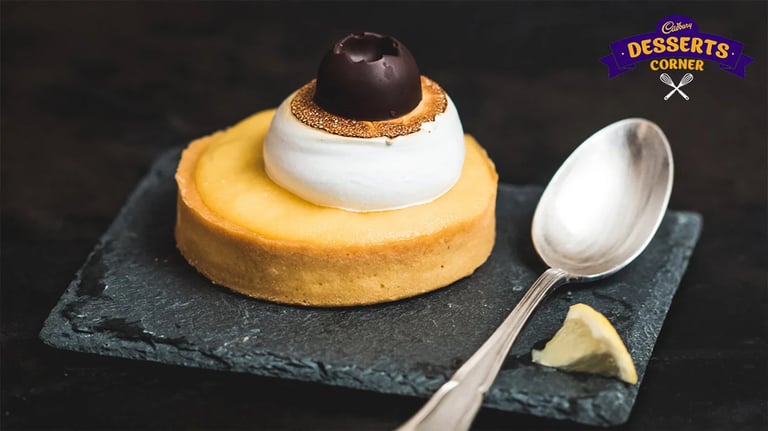Home![]() Articles
Articles![]() A Le Cordon Bleu Chef’s Tips On 3 Dessert Techniques To Master
A Le Cordon Bleu Chef’s Tips On 3 Dessert Techniques To Master
Elevating your dessert game does not need more than a handful of special touches, to visually and tastefully enhance every single bite.

Elevating your dessert game does not need more than a handful of special touches, to visually and tastefully enhance every single bite.
Adding garnishes or finishing touches to desserts can elevate the overall experience by adding visual appeal and creating an enticing presentation that instantly holds attention. Think about a simple chocolate cake topped off with a delicious glaze or blanketed by caramel sauce to make it more appealing to look at, as well as improve its flavor. Not only does it add an extra dimension to your desserts, but also manipulates the texture of what it feels like when you take a bite. The contrast of sweetness or richness balanced by the punctuated finish is an interesting way to make your sweet treats have an extra appeal as well as more enjoyable. Using Le Cordon Bleu Chef Jenni’s hacks to create the perfect gourmet touches to your dessert, here are three hacks to improve your pastry techniques and elevate your baking game in the kitchen. The Master Pattisier at the Adelaide-based institution shares her knowledge and hot tips to create some amazing garnishes that are low in effort but high reward.
Perfect Caramel

As per this hack, making the perfect caramel involves two key ingredients – water and sugar. What’s key to the process is also the temperature at which your caramel is forming, as well as ensuring that it does not crystallise as it cools down – resulting in a silky-smooth consistency that will envelop just about any confection it is poured over.
To make a ‘wet’ caramel, using 500 grams of sugar along with 100 ml of water and allowing it to bubble in a saucepan is the first step towards achieving perfection. With the help of a pastry brush dipped in water, brush the sides of the saucepan to ensure there are no residuals while your mixture bubbles to reach the perfect shade of amber. What this simple technique does is allow the water to run into the caramel, preventing it from crystallising – a possibility that stirring or swirling the pan as well as impurities in the sugar, might lead to.
Caramel-Dipped Hazelnut Garnish

Once you’ve managed to make a batch of delicious caramel that has been cooled considerably – allowing it to thicken further, whole hazelnuts can be attached to the tip of a skewer while you wait. Dip the hazelnut into your caramel and swirl it once, before you place the skewer under a heavy tray and the side of the hazelnut exposed to the air. The trail of caramel which drips from the coating creates a ‘tail’ of sorts, giving it a dramatic visual effect that instantaneously works to elevate the most simplistic pastries
As the excess drips, it sets even further and hardens in the process – giving texture, crunch and colour to just about any dessert that it is placed over. This simple and elegant variation of the classic caramel-coated hazelnuts allows even the most amateur bakers to create some stunning edible pieces that are sure to impress even the toughest critics. Use the garnish drip-side-down or placed gently with the pointed edge facing upwards on cakes, tarts, pies and more.
Perfect Glaze

What most chefs or bakers tend to find challenging as a process is to perfectly glaze their desserts without having it look messy. According to chef Jenni, whether it is shiny chocolate glazes or the contemporary mirror glaze that the internet is obsessing over, chances of wastage are higher than normal – thus making it difficult to clean up without feeling guilty. She suggests using a few sheets of cling film laid over the work surface before placing a wire rack on top.
Once your cakes, cinnamon rolls or cookies have been glazed to perfection, simply take off the rack and set it aside while you fold the edges of the cling film inwards to make a roll. Simply hold the rolled-up cling film over your jar of ganache or glaze and squeeze from the top, downwards into the jar and allow the excess to be collected and reused. This will also enable you to clean up your work surface without too much hassle, the use of soap or water – helping you optimally use your resources.






















